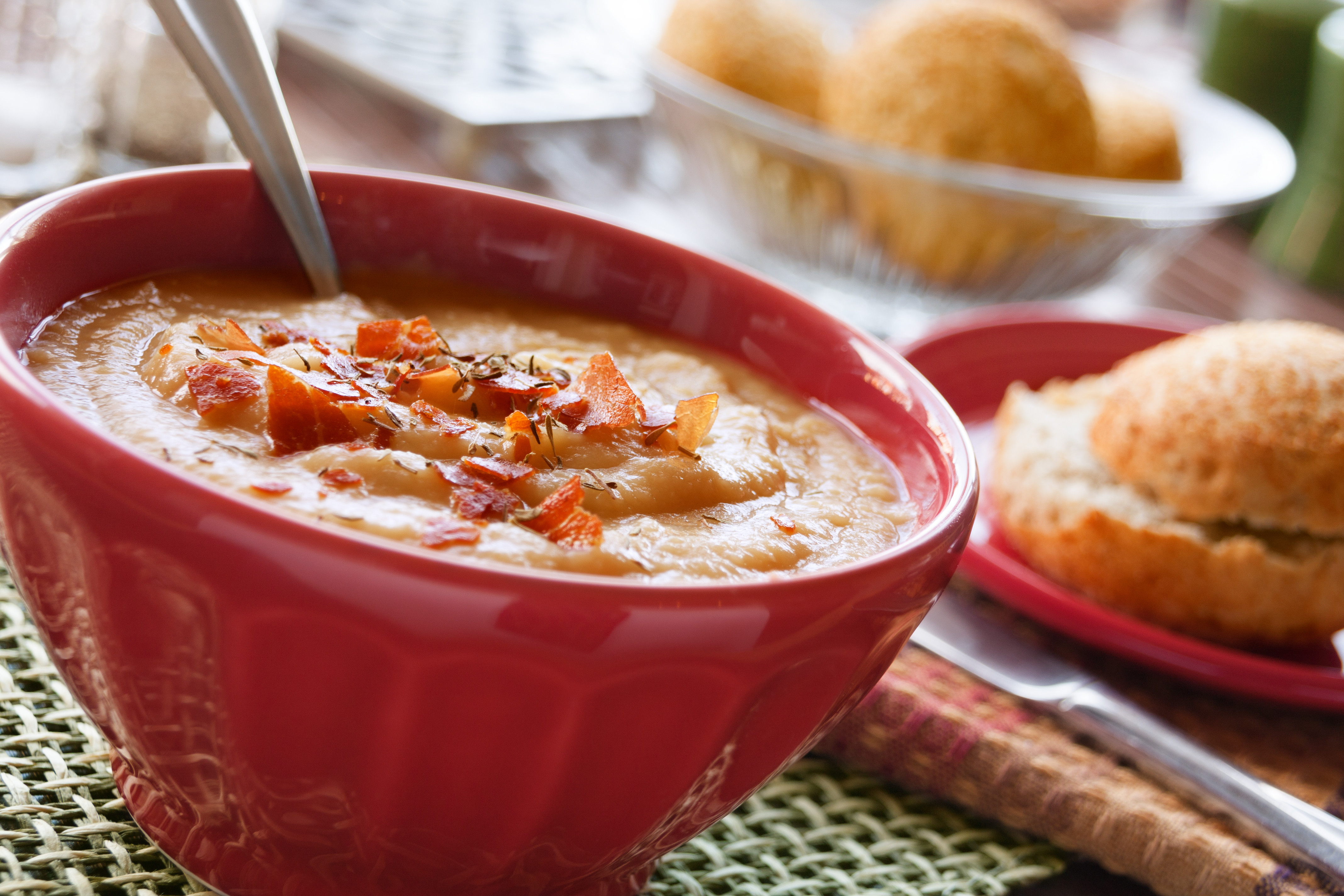If you’ve resolved to “eat more vegetables” or “cut out white foods,” this is your post. I get it, we all like to start fresh in the new year and that’s great. Really! I love a positive resolution like “eat more veggies” because it’s just more pleasant to think about adding something to your diet instead of taking something away, so kudos to you. Now you just need to do it, right? And for those of you looking to eliminate “white foods” from your diet, I’m guessing you mean foods made from white flour and sugar and regular pasta perhaps. Surely you can’t mean white vegetables? Let’s take a look at what’s great about the white vegetables that are plentiful during the winter months, and why they deserve a spot on your plate/in your bowl.

A Variety of Whites
I think when people hear the phrase “eat a colorful diet,” they tend to forget about white veggies. White vegetables, such as cauliflower, white potatoes, parsnips, onions, turnips, mushrooms, celery root, endive and the newly trendy kohlrabi do play nicely on a plate with more colorful fruits and veggies. What’s more, these vegetables tend to be in season during the winter, so they are generally more plentiful and budget-friendly during these months when other produce picks can be pricey. Depending on where you live and the availability of winter farmer’s markets, choosing white veggies can also be an easy way to eat more locally-grown produce.
White Can Be Healthy
While it’s true that brightly colored produce boasts compounds that can boost health, the same can actually be said of white vegetables. As a group, white vegetables provide plenty of vitamins, minerals and beneficial phytonutrients (natural plant chemicals). For example, mushrooms are one of the few natural sources of vitamin D as well as a variety of heart-healthy vitamins and minerals, cauliflower is in the same botanical family (brassica) as cabbage, kohlrabi, kale and broccoli, and provides cancer-fighting compounds just like its cousins. White potatoes are highly nutritious, providing plenty of potassium, fiber, some vitamin C and magnesium. Onions are members of the allium genus of vegetables, and contain quercetin, a phytonutrient with anti-inflammatory and antioxidant power. Rest assured, when you eat vegetables—no matter which ones they are or what color they are—you’re doing your body a nutritional favor (and you’re ahead of most Americans, who generally fall far short of veggie consumption goals, with only about 9% of adults consuming the recommended 2-3 cups of veggies per day). And remember, you can go one better by avoiding veggies that are breaded and/or fried.
White Veggie Love
Maybe you’ve never cooked some of these winter white lovelies before and are stumped…here is some general guidance for a variety of different veggies. Looking for recipe ideas? Our Guiding Stars recipe database has got you covered. Here are some of my favorites for winter: check out this one for a cauliflower and red beans skillet dish, an onion pizza, quick and easy chicken and mushrooms (with wine sauce!), a parsnip and celery root mash, and a soup recipe that makes good use of six different white veggies—jackpot! Okay, time to get cooking, and I hope you enjoy experimenting with white veggies this winter.